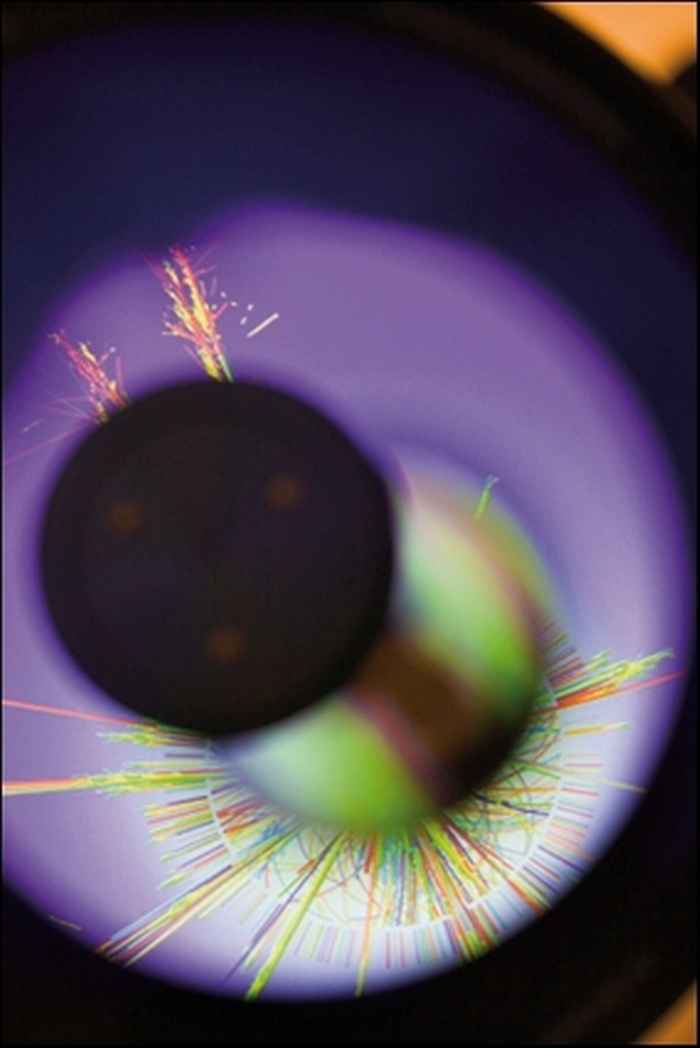Gravitation and Astroparticle Physics Amsterdam (GRAPPA)
Summary

Astroparticle physics is a rapidly growing field of research at the intersection of astrophysics, theoretical physics, particle or high-energy physics, and cosmology.
Progress in these disciplines has, in the past decade, highlighted some profound questions that lie at their interfaces. These questions have, in different ways, become central to their research programmes.
It is precisely such questions that astroparticle physics addresses, for example:
- What is the nature of dark matter and dark energy?
- How can the forces of Nature be unified?
- Does this union leave measurable signatures in the present Universe?
- What do black holes and neutron stars teach us about the fundamental laws of physics?
- In what ways are high-energy neutrinos, cosmic rays, gamma rays and gravity waves produced and how do these new messengers enhance our knowledge of the extremes of the Universe?
These questions are profound, challenging and appealing, and answering them will require advanced and innovative methods from the various disciplines.
The importance of these questions, as well as the prospects of obtaining breakthrough results in the near future, have been widely recognized at the local, national and international level.
With Nikhef-FOM complementing the various institutes of the Faculty of Science, the Amsterdam Science Park already harbours excellent and broad expertise in astroparticle physics and gravitation, and has the unique potential to assume a leading role in the field.
With GRAPPA the Faculty of Science intends to:
- create a new research group consisting of affiliate members of the institutes plus several to be hired faculty members working on the interfaces of the research at the various institutes and divisions;
- set up a joint and coherent research programme that will bring significant focus to and synergy between the existing research programmes, and;
- firmly establish Science Park as one of the leading gravity and astroparticle physics centres in the world.
Researchers of the Institute of Physics (IoP) and the Astronomical Institute “Anton Pannekoek” (API) join forces under the umbrella of the GRAPPA theme.
The research priority is acknowledged by the Faculty of Science and the Board of the university and received additional funding from the Board in 2010.
Scientific case
The present activities in astroparticle physics at the UvA are concentrated at the two institutes –API and IoP. Both institutes have received excellent grades in the most recent national research assessments.
The individual researchers who will initially be actively involved in GRAPPA, 15 in total, are listed in the proposal and all have very strong research and funding records. Awards collected by them in the past years include e.g. two Spinoza Prizes (M. van der Klis, E. Verlinde), two senior ERC grants (R. Wijers, E. Verlinde), four VICI grants (R. Wijers, S. Bentvelsen, P. de Jong, K. Skenderis), one KNAW professorship (M. van der Klis), and numerous junior distinctions.
The GRAPPA initiative is established as an active research centre in 2011. Within GRAPPA, 5-6 new faculty members will be hired in 2011-2012. The new appointees will add significantly to the existing excellence. Given the expected rate of hiring, we envision 50+ publications per year around the theme of GRAPPA.
Six publications with large impact since 2008 and co-authored by affiliate members are mentioned below.
Key publications
- E.P. Verlinde, “On the Origin of Gravity and the Laws of Newton”, JHEP 1104, 209 (2011).
- P.D. Meerburg, J.P. van der Schaar and P.S. Corasaniti, “Signatures of Initial State Modifications on Bispectrum Statistics”, JCAP 0905, 018 (2009).
- S. Bentvelsen, P. de Jong, et al. “Expected performance of the ATLAS experiment: detector, trigger and physics”, ISBN: 978-92-9083-321-5(2009).
- P. Kooijman (ed.), E. de Wolf, et al. “KM3NeT Conceptual and Technical Design Report”, ISBN: 978-90-6488-031-5(2008), ISBN: 978-90-6488-033-9(2008).
- A.L. Watts, et al. “Detecting gravitational wave emission from the known accreting neutron stars”, MNRAS 389, 839 (2008).
- N.R. Tanvir, R.A.M.J. Wijers, et al. “A gamma-ray burst at a redshift of z~8.2”, Nature 461, 1254 (2009).